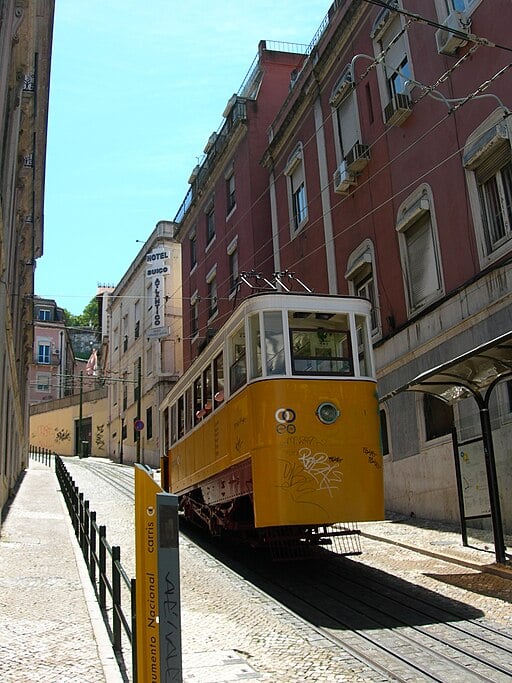Every Member of German Family Now Accounted For
In the hours following Wednesday night’s accident, authorities confirmed 17 deaths but later revised the toll to 16. The confusion arose because one presumed victim, believed to be a German tourist, was not found among the bodies at Lisbon’s Institute of Legal Medicine. His family, who had flown from Hamburg to claim him, made the startling discovery that his name was not on the official list of the dead.
The man, instead, had been rushed to Hospital de São Francisco Xavier, where he was admitted in critical condition among the 21 injured. Officials now believe he survived because he positioned himself over his son and absorbed the impact of the train’s derailment with his own body.
First responders say the father was found lying face-down over the child, “belly next to belly,” shielding him from the brunt of the impact. A plainclothes officer with the Polícia de Segurança Pública (PSP), who was in the area on an unrelated investigation, was one of the first on scene.
“The man appeared lifeless,” the officer later reported, describing how he cleared the father’s airway before turning to the child. The boy was pulled from under the wreckage and placed in the care of bystanders before being carried to an ambulance. His mother, badly injured, reportedly begged rescuers to “save her son first.”
The child remained in the arms of PSP officers until arriving at Santa Maria Hospital, where he was treated and discharged the following afternoon. He is now in the care of his grandparents.
The boy’s 45-year-old mother suffered multiple fractures and underwent surgery. Though she remains hospitalized, she has regained consciousness and is receiving visits from relatives at Santa Maria’s intensive care unit. Doctors say her condition is stable and she is no longer in immediate danger.
“The recovery will take time, but her life is not at risk,” a hospital source confirmed.
Mistaken Identity
The case of the missing father initially confounded both Portuguese authorities and the family. It is now suspected that he was mistaken for another victim due to his resemblance to a British passenger killed in the crash. Both men shared similar builds, and one was wearing a sweater from FC Schalke 04, a German football club, which further complicated identification.
The German embassy in Lisbon confirmed the family’s origin but asked for discretion as the relatives process the ordeal. The boy is the youngest known victim of the accident.
A Story of Rescue
The PSP officers at the scene have been widely praised for their swift response. They were among the first to hear the sound of the cable snapping and the carriage careening downhill into a building at the bottom of Rua da Glória. Deputy Lieutenant Rui Costa, commander of Lisbon’s criminal investigation division, confirmed that one of his agents personally removed the boy from the wreckage.
“He did not leave the child’s side until they were safely at the hospital,” Costa said. All officers involved have since been offered psychological support.
A video filmed by Mohammed Farid, a Bangladeshi immigrant working nearby, shows the boy moments after his rescue on the lap of a Portuguese man who received him from rescuers. Farid later clarified that he was not the man carrying the child, as some reports suggested, but a friend.
More Details on the Victims Emerge
The derailment of the Glória funicular, which connects Lisbon’s downtown to Bairro Alto, left 16 people dead and at least 23 injured. Victims came from Portugal, the United Kingdom, Germany, Canada, France, Switzerland, South Korea, Ukraine and the United States.
We now know more about the victims. Among the dead were three British citizens, including theater professionals Kayleigh Smith (36), William Nelson (44), and 82-year-old transport enthusiast David Young, American college teacher Dr. Heather Hall (51), and four Portuguese employees of Santa Casa da Misericórdia. Two Canadians, confirmed as Blandine Daux and André Bergeron, passed away in the incident. Married for over 20 years, they worked at the archaeology and ethnology laboratory of the Centre de conservation du Québec in Quebec City.
Investigations Continue
A preliminary report from Portugal’s rail accident investigative agency suggests that the cable connecting the two cars failed at its attachment point on the upper carriage. How and why it broke free remains unclear. Authorities have not ruled out mechanical failure, though Carris, the operator, said the funicular passed routine inspection earlier that same day.
Until a full investigation is completed, speculation continues to swirl around maintenance standards and inspection procedures.
Amid the grief and questions, the story of the German family has provided a rare glimmer of hope. The three-year-old boy, discharged and reunited with his grandparents, survived because of his father’s desperate instinct to protect him. The fact that all members of the Germany family survived is truly a miracle.


